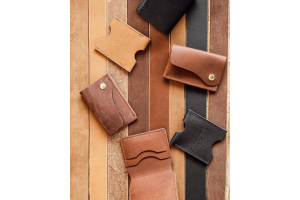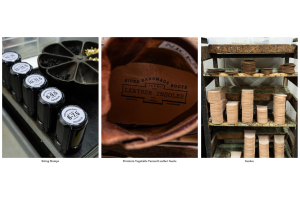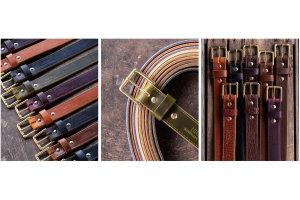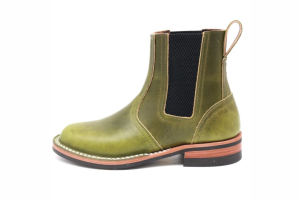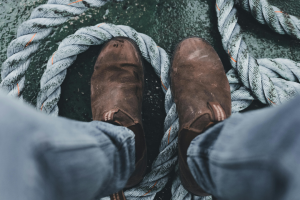How to Choose the Best Steel-toe Boots for Maximum Safety
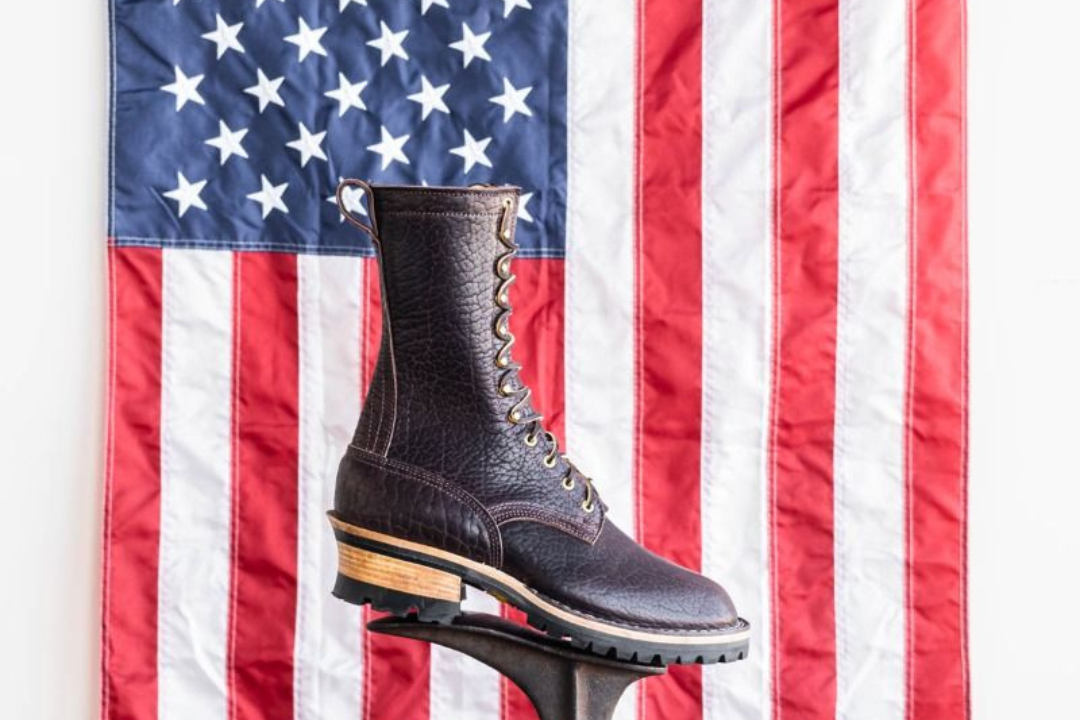
Key Takeaways:
- Know Your Safety Standards: OSHA sets strict guidelines for protective footwear, so look for ANSI and ASTM-rated options that meet your job’s specific demands—whether it’s impact protection, electrical hazard resistance, or puncture-proof durability.
- Boot Construction Matters: The right build makes all the difference. Full-grain leather molds to your foot over time, while stitch-down construction ensures long-term toughness and the ability to resole when needed.
- Pick the Right Sole for the Job: From slip-resistant traction for slick job sites to shock-absorbing comfort for long shifts on concrete, the right sole keeps you steady and protected in any environment.
Choosing steel-toe boots isn’t just another task on your work checklist–it’s about finding dependable footwear that holds up through grueling shifts, unpredictable conditions, and long hours on your feet.
The right pair keeps you steady, absorbs impact, and prevents injuries that could take you off the job. Nick’s Boots stands for craftsmanship that lasts. Each pair is built from full-grain leather and shaped by skilled hands, ensuring durability that improves with every wear, but toughness alone isn’t enough. This guide breaks down everything you need to know about steel-toe boots. From common workplace hazards to the materials that make a boot truly durable, every detail matters when choosing the right pair.
Key Safety Standards for Steel-toe Boots
Not all steel-toe boots are built to withstand the same challenges. On a job site, one misstep can mean a shattered toe from falling debris or a nasty shock from exposed wiring. That’s where safety standards come in. These regulations ensure that your boots can handle the hazards you face, from impact resistance to electrical protection. Let’s cover some key safety standards and why these are imperative for finding the best steel-toe boots.
OSHA and Workplace Safety Regulations
The Occupational Safety and Health Administration (OSHA) was established in 1970 to create and enforce workplace safety standards across various industries. When it comes to protective footwear, OSHA requires that steel-toe boots meet specific impact and compression resistance levels to protect against common workplace hazards. These regulations help prevent serious injuries caused by falling objects, electrical exposure, and punctures from sharp debris.
ANSI and ASTM Ratings: What They Mean
Two most recognized organizations that set safety benchmarks for protective footwear are the American National Standards Institute (ANSI) and the American Society for Testing and Materials (ASTM). These organizations develop rigorous testing standards to ensure that steel-toe boots provide the necessary protection for workers in hazardous environments.
- ANSI Ratings: Previously, ANSI Z41 was the primary safety standard for protective footwear. While ANSI no longer maintains this standard, the ratings lay the groundwork for modern safety regulations.
- ASTM Ratings: Today, ASTM F2413-18 is the industry standard for steel-toe boots. This rating ensures the toe cap can withstand a minimum impact of 75 pounds and protect against compression forces up to 2,500 pounds.
Electrical Hazard Compliance
When your job puts you near live wires, high-voltage equipment, or exposed circuits, the right boots can mean the difference between a close call and a life-threatening accident. Electrical hazard (EH) boots provide a critical layer of protection, preventing electricity from traveling through your body in the event of accidental contact.
EH-rated boots are designed with non-conductive soles and heels to minimize the risk of electrocution in hazardous environments. This added protection is essential for workers who regularly encounter electrical exposure. Industries that rely on EH-rated boots include electricians, utility workers, linemen, and industrial technicians.
Slip Resistance
Slips and falls cause a significant number of workplace injuries, particularly in fast-paced, high-risk environments. A split-second loss of traction can send you crashing onto hard concrete, into heavy machinery, or off an elevated platform. If your job exposes you to slippery surfaces, wearing slip-resistant boots is essential.
Boots with deep tread patterns and heavy-duty rubber soles provide the grip needed to maintain stability on slick or uneven surfaces. Whether you're navigating a grease-slicked garage, a freshly hosed-down worksite, or a rain-soaked loading dock, proper traction keeps you upright and on-call.
Puncture Resistance
A single misstep in the wrong place can have painful consequences. An exposed nail, a jagged shard of metal, or stray glass can puncture standard outsoles, leaving you vulnerable to serious injuries. Puncture-resistant boots reinforce the midsole with steel or composite materials, creating a protective barrier against sharp objects that would otherwise pierce through regular footwear.
Industries where puncture-resistant boots are essential include construction, manufacturing, roofing, demolition, and scrapyard work. When your work environment is scattered with nails, scrap metal, or broken materials, investing in reinforced midsoles can prevent injuries that could take you off the job.
Finding the Right Fit: Comfort Meets Protection
The right fit ensures comfort, prevents fatigue, and keeps you moving without distractions. Here’s what to look for when choosing boots that balance protection with all-day wearability:
- Know Your Sizing: Different brands may fit differently, so always check size charts and, if possible, try boots on after a full day of activity. Your feet naturally expand throughout the day, so testing the fit at their largest helps ensure all-day comfort without unwanted tightness.
- Choose the Right Material: Full-grain leather is the best option for durability and comfort. It molds to your foot over time, offering a custom fit while remaining breathable and resistant to the elements.
- Ensure a Secure Heel and Ample Toe Room: A snug heel prevents slipping, while a roomy toe box allows for natural movement and reduces pressure points. Avoid boots that pinch or squeeze, as discomfort can lead to long-term foot pain.
- Pay Attention to Sole Construction: A well-built sole provides traction, shock absorption, and support. Rubber outsoles with deep tread patterns offer stability on slick surfaces and rugged terrain, helping you stay steady in demanding environments.
- Break Them in Properly: Even the best boots require a break-in period. Wear them for short periods at first and pair them with quality socks.
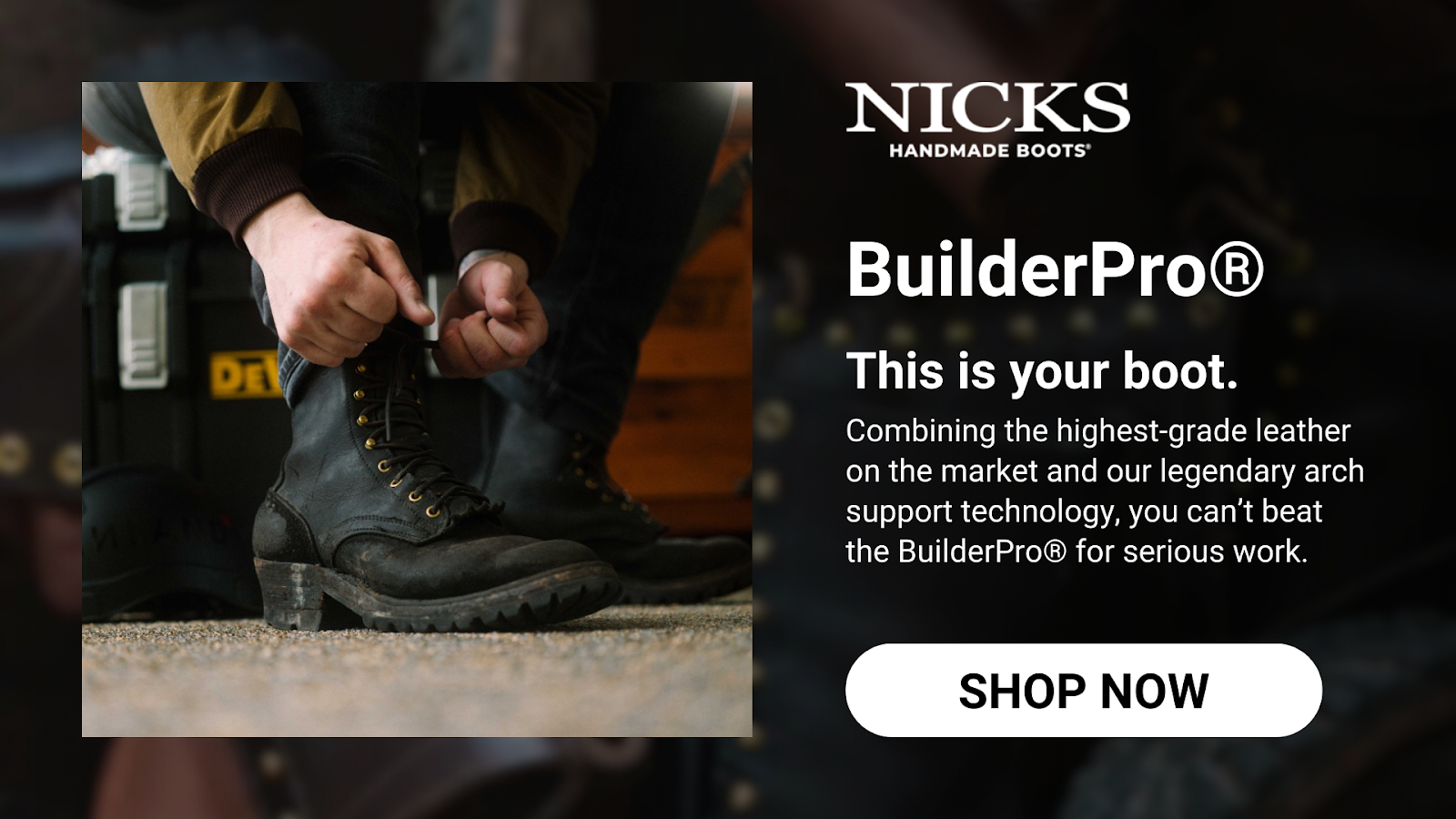

Comparing Steel-toe vs. Composite Toe Boots
When selecting the best protection for your feet, it's important to weigh the difference between steel-toe and composite toe boots. Both options offer safety features, but each has distinct advantages that could make one more suitable for your needs than the other.
Steel-Toe Boots: Maximum Strength for Heavy-Duty Jobs
Steel-toe boots have long been the trusted choice for workers who face impact risks on the job. Built to handle crushing weight, sudden drops, and rolling hazards, steel-toes provide unmatched protection when the unexpected happens. These boots meet the demands of industries like construction, manufacturing, and warehouse work.
Composite Toe Boots: Lightweight Protection for Specialized Work
Composite toe boots are built with non-metal materials like Kevlar, carbon fiber, or reinforced plastic. While they don’t match steel when handling crushing force, they offer their advantages. Lighter weight means less fatigue during long shifts, and since they don’t conduct electricity, they’re a top choice for electricians, linemen, and anyone working around live wires.
Features to Look for in Quality Steel-toe Boots
When you're on the hunt for the best steel-toe boots for men, focus on features that elevate them from merely functional to exceptional. Here at Nick’s Boots, we’ve honed in on what truly matters to those who know their way around a job site or enjoy the long trails as much as they love a weekend at the cabin. Here’s what to look for in a pair built to last:
- Full-Grain Leather Built for the Long Haul: Quality boots start with strong materials. Full-grain leather resists wear, holds up against the elements, and forms to your feet over time. It stays breathable while offering unmatched durability, making it a trusted choice for tough jobs and stylish attire outside of work.
- Handcrafted Construction That Holds Up: Strong stitching, reinforced toe boxes, and double-layered leather separate real work boots from disposable ones. A well-built pair can be resoled and repaired so they stay in service for decades.
- Breathability and Moisture Control: Hot, damp boots make for miserable days. Full-grain leather naturally lets air flow, while moisture-wicking linings help keep feet dry in heat, rain, and cold conditions.
- Reliable Soles for Any Terrain: A sturdy outsole grips the ground and keeps you steady on wet, uneven, or slippery surfaces. The right rubber sole provides the traction needed for warehouses, construction sites, and unpredictable outdoor conditions.


Selecting Sole Types for Different Work Environments
The right sole can keep you on your toes. Whether you're navigating slick warehouse floors, pounding pavement for hours, or trekking through unpredictable terrain, choosing the right sole ensures comfort, stability, and safety. Every sole at Nick’s Boots is built with purpose, designed to handle the toughest conditions while keeping you steady.
Slip-Resistant Soles for Slippery Surfaces
If you’re constantly moving through slick environments, a slip-resistant sole is paramount. For example, warehouse workers, mechanics, and oil rig crews rely on rubber soles with deep tread patterns that push water, grease, and oil away from their footfalls. A well-designed outsole keeps you steady when stepping onto a freshly mopped floor, maneuvering around a workshop covered in sawdust, or working on an oil-slicked surface where one wrong move could send you to the ground.
Shock-Absorbent Soles for Long Shifts on Hard Ground
Spending long hours on unforgiving surfaces takes a toll. Factory workers, delivery drivers, and construction crews who walk miles a day need soles that absorb impact to reduce foot fatigue and joint strain. Without proper shock absorption, every step pounds into your knees and lower back, making a long shift feel even longer. A cushioned sole softens the blow, keeping you comfortable and helping you push through those overtime hours without unnecessary aches and pains.
Lugged Soles for Rough Terrain
Outdoor jobs in construction, forestry, and landscaping require stability on uneven ground. Lugged soles are designed with deep treads that dig into loose dirt, gravel, and rocky paths, providing traction when the terrain fights against you. Whether you're climbing scaffolding, trekking through mud, or hauling supplies up a rugged slope, the right soles keep you surefooted and ready for whatever the job demands.
Final Thoughts
Choosing the best steel-toe boots for men is more than just picking out a pair of shoes—it's about finding a companion that will stand by you through thick and thin. At Nick’s Boots, quality isn’t an afterthought. Every boot is handcrafted from full-grain leather, built with precision, and designed to outlast the toughest conditions. These aren’t boots you toss aside after a season. They break in over time, shaping your feet and getting better with every step.
The job demands strength, endurance, and commitment. Your boots should match that. Step into a pair of Nick’s Boots and put your trust in craftsmanship that’s built to last.
Read also:
Frequently Asked Questions About Steel-toe Boots
What is the difference between steel-toe and composite toe boots?
steel-toe boots are made with tough, durable steel caps that provide strong protection against heavy objects and compression. Composite toe boots, on the other hand, use non-metal materials like kevlar, carbon fiber, or plastic. While they offer protection, they may not be as strong as steel but are lighter and don't conduct electricity, making them an option for electrical environments.
What is the lifespan of steel-toe boots?
The lifespan of steel-toe boots largely depends on usage and care. On average, a well-crafted pair like those from Nick's Boots can last several years with proper maintenance. Our full-grain leather ensures durability, but it’s important to regularly clean and condition your boots to extend their life.
Are there waterproof steel-toe boots available?
Yes, waterproof options are available. While leather is naturally more water-resistant than synthetic materials, some steel-toe boots are treated or lined to offer additional waterproof features. It's crucial to check the specifications of each boot if water resistance is important to your work environment.
What are the signs of a poorly constructed steel-toe boot?
Signs include uneven stitching, gaps between the sole and shoe, inferior quality materials, and discomfort when worn. At Nick's Boots, our craftsmanship is apparent in every detail, ensuring each pair is built to last and offer optimal protection and comfort.
Can steel-toe boots cause foot problems?
Foot problems typically arise from incorrect sizing or poor quality boots. Properly fitted boots constructed from high-quality materials like those at Nick's Boots offer support and comfort. Always ensure you choose the right size and consider insoles for added cushioning.
Can steel-toe boots be repaired if they are damaged?
Many aspects of steel-toe boots can be repaired, such as resoling or restitching. However, if the structural integrity of the steel cap is compromised, replacement might be necessary. High-quality boots from Nick's Boots are designed for resilience but also for repairability to support long-term use.
Is there a difference between steel-toe boots for different industries?
Yes, different industries may have specific safety requirements. For instance, electrical work may require non-conductive boots, while construction settings often need robust protection against falling objects. Understanding your industry’s needs helps in selecting the right pair from our diverse lineup.
How do I determine the correct size for my steel-toe boots?
Accurate sizing is essential for comfort and safety. It's advised to measure your foot size at the end of the day when feet are at their largest. Consider the shape of your foot and any need for insoles. Our boots are designed to mold to your feet but starting with the correct size is key—our guides can assist you in finding the right fit.
